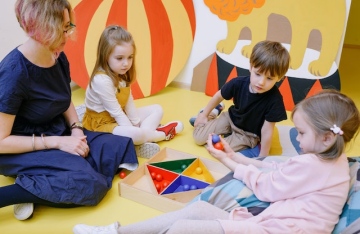Creative Thinking can be defined as one’s ability to analyse a topic from an analytical approach to determine important underlying factors that influence results. Creative thinking is part of Critical Thinking and is today considered as being among the most valuable skills as it contributes immensely towards problem-solving and identification of solutions. Creative Thinking is not a skill every person can master, but individuals can hone this skill which will improve subject knowledge, exploration of new topics and ultimately influence the individual’s career and professional stability. This has resulted in people changing their perspective towards education, learning and skill development in the 21st century. Creative thinking can help propel an individual’s career success despite them not having a formal education in a subject or field. Simply being able to understand the fundamentals of driving the topic are adequate to kick starts an individual’s career in a field where they would gradually master the skills to influence career stability. This article will explore some important tips to help you boost your ability to be a creative thinker.
Creative Thinking Skills
Creative thinking involves the ability to review a topic based on which further questions and queries can be raised to enhance understanding. To be an effective creative thinker, it is mandatory to develop the following skills.
Subject Analysis
It is mandatory for each person seeking to develop their creative thinking skills to be a critical analyst and be able to critique and question a topic. This makes it important to adopt a pessimistic research analysis attitude which helps identify negative points linked to the research topic based on which further questions can be raised. Only by critiquing a subject can vulnerabilities and weaknesses be identified, based on which further questions and research proposal can be developed.
Open-Mindedness
A Creative thinker must also maintain an open mind towards proposals and remain open towards other stakeholder contributions. This is important as it allows a larger number of stakeholders to work a subject and make their contributions and subjections thus allowing for better clarity to be raised regarding the topic and possible improvements or solutions. Every contribution must be considered and discussed to help create awareness and acknowledge team participations which helps boost participant contributions towards project knowledge creation.
Problem Solving
A creative thinker does not focus on replacing a failed part of the system but focuses on identifying the reason leading to the failure. This is important as it delivers long term system failure solutions thus helping reduce the time and resources wasted due to system component or process failure. A creative thinker will focus their energy towards determining factors that could have led or influenced the failure thus helping rectify a problem which could lead to further failures in the future. A problem solver must be able to use their creativity to determine factors causing failures and propose solutions to enhance a system thus reducing time and resource wastage.
Organization
Creative thinkers should be capable of reviewing the detailed steps associated with a project’s workflow to ensure maximum efficiency in business report writing. It is therefore important for a creative thinker to also develop systematic system processes by organizing operations and processes which will reduce the risk of process bottlenecks. It’s also important for a creative thinker to be able to re-evaluate an existing system and propose re-organization of the process to help improve efficiency, productivity and profits. A creative thinker will also constantly perform research on organization planning, systems and tools and propose their implementation to the process to enhance performance and profits.
Communication
Communication is key to the success of every operation thus its critical to ensure communication lines remain open and each stakeholder’s contributions are being considered. There are today various modes of communication which can be used to enhance team networking but it’s important to maintain various communication networking medium to ensure each team member receives messages. A creative thinker will also develop a communications policy which will clearly outline the specific approaches linked to communication each team member must follow. The policy should outline each team member’s role and responsibilities thus promoting accountability. In addition to putting in place the latest communication medium and developing policies, creative thinkers need to also encourage team member participation. This requires for the creative thinker to outline their expectations but also request for inputs from team members which would be analysed to determine their relevancy towards the project. Maintaining a liberal and friendly communication attitude will encourage staff participation and contributions will help further expand project knowledge and understanding.
Creative Thinking Examples
Some common examples of creative thinking include being artistically creative, a Creative Problem-Solver, and possessing STEM Creativity (science, technology, engineering and mathematics). It’s critical to keep in mind creative thinking is not limited to the above and will range depending on your skill and ability to handle and resolve problems.
Artistic Creativity
Artistic Creativity refers to being able to redesign an existing product to meet the current and futuristic market parameters for leading strategic change. Artistic creativity is important towards demonstrating a brands focus and dedication towards innovation and development. This makes it important for each brand to continuously develop new product designs and specifications to meet competitor and consumer expectations. A creative thinker must be able to also develop new product and services based on consumer demand and be capable of introducing them to the market and consumers.
Creative Problem-Solving
A creative thinker is not limited to developing new ideas but should also be capable of solving problems on existing products or services. This is essential as it is common to find business-facing performance issues on their products which would require for a creative thinker to locate a solution. This makes it critical to be capable of using creative ideas to solve problems identified on products after their development, productions and sale. This is a common problem being faced in certain industries such as the Automobile and smartphone industries where product components failures are reported after developments and sale. Issues commonly develop after product releases as they are used under a wide number of conditions which places the products under pressure resulting in various issues arising. In such cases the product has already reached the consumer and product redesign is not possible thus creative solutions must be developed.
Creativity in STEM
STEM creativity refers to knowledge related to science, technology, engineering, and math and being able to utilize the knowledge to boost your creativity and understanding. Creative thinking involved being able to develop ideas or identify solutions to problems, and achieving this will in most situations require the use of STEM to identify and support findings. This makes mastering STEM an important part of creative thinking as it allows for the identification of new ideas and solutions to existing issues to be determined. Creative thinkers also tend to invest time towards learning to use STEP fundamentals which help develop solutions.
Creative Thinking is an important requirement for each individual to expand their professional opportunities and be capable of managing teams to maximize their efficiency and productivity. Creative thinking is, therefore, important skill individuals must develop to enhance their knowledge which will have a direct effect on their career performance and growth.
Author Bio
My name is Thomas Smith. I have worked as a content writer for various publishing houses through my career. I have 12 years of overall writing experience out of which the past 3 years have been as a writer for Assignment Writing Help. I have also published various articles and blogs on education and career building.




